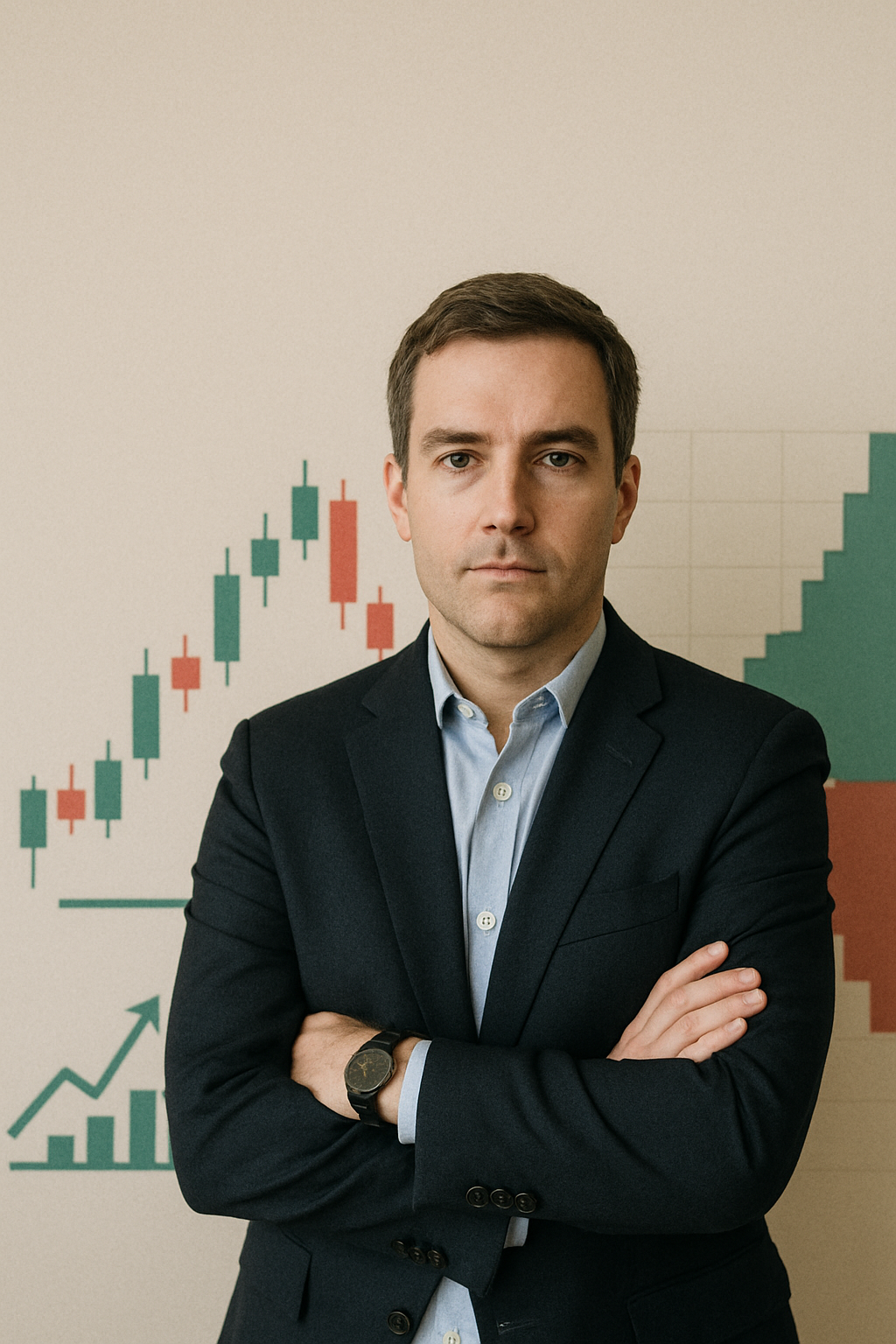The intricate machinery of global financial markets, particularly stock exchanges, operates on a principle often taken for granted by everyday investors: the ease with which buyers and sellers can find each other and execute trades. This seemingly seamless process is, in large part, orchestrated and maintained by a critical, yet often unseen, entity known as the market maker. These financial institutions or individuals play an indispensable role in ensuring the liquidity, efficiency, and fairness of trading, acting as the grease that keeps the complex gears of the stock market turning smoothly.
This essay aims to provide a comprehensive exploration of market makers, delving into their fundamental functions, their evolution from traditional exchange specialists to modern algorithmic powerhouses, their operational strategies, and the significant benefits they confer upon the broader market ecosystem. We will also examine the inherent challenges and risks they face, their interaction with retail investors, and the regulatory frameworks that govern their vital activities. By understanding the multifaceted role of market makers, participants can gain a deeper appreciation for the underlying mechanisms that enable the continuous and orderly exchange of securities.
The Core Function of Market Makers: Providing Liquidity
At the heart of a market maker’s existence is the provision of liquidity. In financial terms, liquidity refers to the ease with which an asset or security can be converted into cash without affecting its market price. A highly liquid market allows participants to buy or sell large quantities of an asset quickly and at a fair price. Without adequate liquidity, a market can become erratic, with wide price swings and difficulty in executing trades.
The Essence of Liquidity in Financial Markets
Imagine a market where you wish to sell shares of a company, but no one is immediately willing to buy them at a reasonable price, or vice versa. This scenario describes an illiquid market, where transactions are difficult, slow, and potentially costly. In such a market, a seller might have to significantly lower their asking price to find a buyer, or a buyer might have to significantly raise their bid to acquire shares, leading to undesirable price impact and increased transaction costs for all participants.
Market makers address this fundamental problem by continuously quoting both a “bid” price (the price at which they are willing to buy a security) and an “ask” or “offer” price (the price at which they are willing to sell a security). They essentially stand ready to buy or sell, acting as an intermediary between otherwise disparate buyers and sellers. This constant presence of two-sided quotes ensures that there is always a counterparty available for a trade, thereby facilitating immediate execution and maintaining price continuity.
The Bid-Ask Spread: The Market Maker’s Lifeblood
The difference between the bid price and the ask price is known as the “bid-ask spread.” This spread represents the market maker’s compensation for providing liquidity and taking on the inherent risks associated with their role. For example, if a market maker quotes a bid of $10.00 and an ask of $10.05, the bid-ask spread is $0.05. When a trader buys from the market maker, they pay the ask price ($10.05). When a trader sells to the market maker, they receive the bid price ($10.00). The market maker aims to buy at the bid and sell at the ask, capturing the spread as profit on each round-trip transaction.
This seemingly small margin, when multiplied by thousands or millions of trades across numerous securities, can accumulate into significant revenue for market makers. Their profitability hinges on efficiently managing their inventory, accurately predicting short-term price movements, and executing a high volume of trades. A wider spread implies higher compensation for the market maker, while a narrower spread indicates greater competition among market makers or higher liquidity in the underlying security, benefiting the end trader.
The Importance of Liquidity for Market Operations and Fair Pricing
The continuous provision of liquidity by market makers is crucial for several reasons:
- Smooth Market Operations: Without market makers, finding a counterparty for a trade could be a time-consuming and uncertain process. Market makers ensure that trades can be executed almost instantly, preventing bottlenecks and maintaining the smooth flow of capital.
- Fair Pricing: By consistently offering both buying and selling prices, market makers contribute to efficient price discovery. Their quotes reflect the immediate supply and demand dynamics, helping to establish a fair market price for a security at any given moment. In illiquid markets, prices can be highly volatile and not truly reflective of an asset’s underlying value.
- Reduced Price Impact: When a large order is placed in an illiquid market, it can significantly move the price against the trader. Market makers, by absorbing these orders, help to minimize the price impact, ensuring that large trades can be executed without unduly distorting the market price.
- Facilitating Investor Confidence: The assurance that one can buy or sell securities quickly and at a transparent price fosters confidence among investors, encouraging broader participation in the financial markets. This confidence is a cornerstone of a healthy and functioning capital market system.
(For more on market liquidity, consider resources from the Securities and Exchange Commission (SEC): https://www.sec.gov/)
The Evolution of Market Making: From Open Outcry to Algorithmic Trading
The role of market making has undergone a profound transformation, moving from the chaotic trading floors of open-outcry exchanges to the highly automated, electronic networks of today. Understanding this evolution is key to appreciating the current landscape of market operations.
From Specialists to Automated Systems
Historically, market making was primarily conducted by “specialists” on exchange floors, such as the New York Stock Exchange (NYSE). These individuals were designated for specific stocks and were responsible for maintaining an orderly market in those securities. They stood in trading pits, shouting bids and offers, and physically matching buy and sell orders. Their role involved a significant degree of human judgment, intuition, and direct interaction with brokers.
The advent of electronic trading systems and the widespread adoption of computers in finance initiated a paradigm shift. Electronic Communication Networks (ECNs) emerged in the late 20th century, allowing direct automated matching of buy and sell orders. This innovation gradually eroded the dominance of physical trading floors and paved the way for a new breed of market makers.
The most significant evolution has been the rise of algorithmic trading and high-frequency trading (HFT) firms. These firms leverage powerful computers and sophisticated algorithms to execute a vast number of trades at incredibly high speeds, often in microseconds. They analyze market data, identify fleeting arbitrage opportunities, and adjust their quotes almost instantaneously. Today, a significant portion of market making activity, particularly in highly liquid securities, is automated, minimizing human intervention in the execution process.
(For historical context on stock market evolution, Investopedia offers a good starting point: https://www.investopedia.com/)
How Market Makers Operate: Strategies and Mechanisms
Modern market makers employ highly sophisticated strategies and rely on cutting-edge technology to perform their functions effectively and profitably. Their operations are a delicate balance of risk management, inventory control, and technological prowess.
Quoting Two-Sided Markets: The Core Strategy
The fundamental operation of a market maker involves continuously quoting a two-sided market for the securities they cover. This means they simultaneously display both a bid price (the highest price they are willing to pay) and an ask price (the lowest price they are willing to accept). For example, a market maker might quote 200 shares at $50.00 (bid) and 200 shares at $50.05 (ask).
- Buying at the Bid: When a customer wants to sell, the market maker buys at their bid price.
- Selling at the Ask: When a customer wants to buy, the market maker sells at their ask price.
The goal is to capture the bid-ask spread on these transactions. The market maker aims to facilitate as many trades as possible, profiting from the small difference between their buying and selling prices.
Inventory Management: A Constant Balancing Act
A critical aspect of market making is inventory management. Every time a market maker buys a security, they add it to their inventory (go “long”). Every time they sell a security, they reduce their inventory or go “short” (if they sell shares they don’t yet own). Maintaining a balanced inventory is crucial to managing risk.
If a market maker accumulates too much of a security, they are exposed to the risk of that security’s price falling. Conversely, if they become too short, they face the risk of the price rising. Market makers use complex algorithms to monitor their inventory levels in real-time and adjust their quotes or execute offsetting trades to manage their exposure. This continuous adjustment is known as “hedging,” where they take positions in related securities or use derivatives to neutralize their risk.
Risk Management: Navigating Volatility
Market making is inherently a risky business. Market makers face several types of risk:
- Inventory Risk (or Directional Risk): The risk that the price of the securities in their inventory will move adversely. If a market maker buys a large block of shares at $50 and the price suddenly drops to $49, they incur a loss.
- Execution Risk: The risk that they cannot offset a trade quickly enough. For example, if they buy a large quantity of shares, they need to find buyers for those shares (or hedge their position) before the price moves against them.
- Information Risk: The risk that another market participant possesses superior information that is not yet reflected in the market price.
- Flash Crash Risk: Extreme market volatility or sudden, sharp price drops can lead to significant losses for market makers if their algorithms cannot react fast enough or if liquidity suddenly evaporates.
To mitigate these risks, market makers employ sophisticated strategies, including:
- Tight Spreads on Liquid Securities: They offer very narrow spreads on highly liquid securities where price movements are more predictable and offsetting trades are easy to execute.
- Wider Spreads on Illiquid Securities: For less liquid securities, where risks are higher, they will quote wider spreads to compensate for the increased risk.
- Automated Hedging: Using algorithms to automatically execute offsetting trades or derivative positions to neutralize their inventory risk.
- Position Limits: Setting limits on the maximum amount of inventory they are willing to hold in any given security.
Price Discovery and Market Efficiency
Beyond simply facilitating trades, market makers play a vital role in price discovery. Their continuous two-sided quotes, which reflect the immediate supply and demand, contribute to the efficient and accurate pricing of securities. In a market with robust market making, prices quickly adjust to new information, reducing opportunities for arbitrage and ensuring that the market price closely reflects all available information. This contributes significantly to overall market efficiency.
Types of Market Makers and Their Characteristics
The landscape of market making is diverse, encompassing various types of entities with different operational models and roles within the financial ecosystem.
Designated Market Makers (DMMs)
Historically, Designated Market Makers (DMMs), previously known as specialists, were prominent on exchanges like the New York Stock Exchange (NYSE). A single DMM firm is responsible for a specific set of listed securities. Their obligations include:
- Maintaining an Orderly Market: Ensuring that there’s always a fair and orderly market for their assigned securities, even during periods of volatility.
- Providing Liquidity: Quoting continuous two-sided markets.
- Facilitating the Opening and Closing Auctions: Managing the price discovery process at the start and end of the trading day.
- Managing Trade Halts: When there’s a significant price movement or news, the DMM works with the exchange to halt trading if necessary and facilitate an orderly reopening.
While their physical presence on the floor has diminished with electronic trading, DMMs still play a role in managing complex orders and maintaining stability, especially for less liquid securities or during unusual market events.
Over-the-Counter (OTC) Market Makers
Over-the-Counter (OTC) market makers facilitate trading in securities that are not listed on traditional stock exchanges. These often include smaller companies, certain bonds, or derivatives. OTC markets are decentralized, meaning trades occur directly between two parties (brokers, dealers, market makers) rather than on a centralized exchange.
OTC market makers communicate their quotes through electronic networks, such as the OTC Markets Group. They are crucial for providing liquidity to less regulated or smaller cap securities. The spreads in OTC markets can often be wider than on exchange-listed securities due to lower liquidity and higher inherent risk.
Electronic Market Makers (EMMs) / Proprietary Trading Firms
These are the dominant players in modern, high-volume electronic markets. Electronic Market Makers (EMMs), often proprietary trading firms (meaning they trade with their own capital rather than on behalf of clients), leverage sophisticated technology and algorithms to:
- Execute a High Volume of Trades: They make money by executing millions of trades per day, capturing very small bid-ask spreads on each trade.
- Maintain Ultra-Low Latency: Their trading systems are designed for extreme speed, allowing them to react to market changes and execute trades faster than other participants.
- Employ Complex Algorithms: They use highly advanced algorithms for quoting, inventory management, risk control, and identifying fleeting arbitrage opportunities.
These firms operate across various asset classes, including equities, options, futures, and foreign exchange, contributing significantly to the liquidity of major electronic exchanges globally.
Retail vs. Institutional Market Makers
It’s also useful to differentiate market making entities by the type of client they serve:
- Institutional Market Makers: These are large financial institutions (e.g., investment banks) that provide liquidity for large institutional clients (e.g., pension funds, hedge funds) looking to trade significant blocks of securities. They often deal in “off-exchange” or “dark pool” transactions to minimize market impact for large orders.
- Retail Market Makers: These are firms that specifically focus on executing trades for individual, or retail, investors. They often receive “payment for order flow” from retail brokers (which we will discuss later). Their focus is on handling a high volume of smaller, individual orders efficiently.
The Benefits of Market Makers for the Ecosystem
The existence and operation of market makers confer a multitude of benefits that are critical for the smooth functioning and health of financial markets. Their role goes beyond simply facilitating trades; it underpins the very efficiency and accessibility of capital markets for all participants.
Enhanced Liquidity: The Cornerstone Benefit
As previously discussed, the primary benefit market makers provide is enhanced liquidity. By continuously quoting both buy and sell prices, they ensure that there’s always an immediate counterparty for a trade. This dramatically reduces the time and effort required for investors to convert their assets into cash (or vice versa), allowing them to enter or exit positions quickly without significantly affecting the market price. This ease of transaction is vital for attracting investment and maintaining active trading.
Reduced Volatility and Price Continuity
Market makers act as shock absorbers in the market. When there’s a sudden surge in selling pressure (more sellers than buyers), market makers will step in to buy shares, even if only temporarily, thereby preventing a steep and disorderly price drop. Conversely, if there’s a sudden surge in buying pressure, they will sell from their inventory or go short, preventing an equally steep and disorderly price increase. This continuous buying and selling activity helps to:
- Absorb Temporary Imbalances: They bridge the gap between temporary supply and demand imbalances.
- Maintain Price Continuity: They ensure that prices move in a more orderly and continuous fashion, avoiding large gaps between trades. This makes the market more predictable and reduces the risk of “flash crashes” or extreme price volatility.
H2: Narrower Spreads: Cost Savings for Traders
Competition among market makers for order flow often leads to tighter bid-ask spreads. When multiple market makers are quoting prices for the same security, they compete to offer the best (tightest) bid and ask prices to attract trades. A narrower spread means that the difference between the buying price and selling price is smaller, which directly translates to lower transaction costs for investors. Even a penny saved per share can amount to significant savings over many trades, benefiting both retail and institutional investors.
Facilitating Order Execution: Immediate Trade Fulfillment
For investors placing market orders (orders to buy or sell immediately at the best available price), market makers provide nearly instantaneous execution. Without them, a market order might sit unfulfilled for an extended period, or might be filled at a significantly different price than anticipated, especially in less liquid securities. Market makers guarantee that a market order will be filled, providing certainty and speed of execution for traders who prioritize immediacy.
Market Efficiency: Reflecting True Value
By constantly quoting prices and absorbing orders, market makers contribute significantly to market efficiency and fair pricing. Their activity helps ensure that new information (e.g., earnings announcements, economic data) is rapidly incorporated into the price of a security. This reduces the opportunities for informed traders to exploit price discrepancies, ensuring that the market price closely reflects all available information about a security’s underlying value. A truly efficient market is one where prices fully reflect all available information.
The Challenges and Risks Faced by Market Makers
While market makers play an indispensable role and generate substantial revenue, their operations are fraught with significant challenges and inherent risks. Their profitability is a tightrope walk, balancing rapid execution with careful risk management in a fiercely competitive environment.
Inventory Risk: The Peril of Adverse Price Movements
The most fundamental risk faced by a market maker is inventory risk, also known as directional risk. This arises from the fact that a market maker must hold an inventory of securities (go long) when they buy from sellers, or take a short position (sell shares they don’t own, with the intention of buying them back later) when they sell to buyers. If the price of a security moves adversely while it’s in their inventory, they incur a loss.
For example, if a market maker buys 10,000 shares of XYZ stock at $50 and the price suddenly drops to $49 before they can sell or hedge, they face a $10,000 loss ($1 per share x 10,000 shares). This risk is compounded when dealing with illiquid securities or during periods of high market volatility, where price movements can be sharp and unpredictable. Market makers use complex algorithms and real-time data analysis to manage this risk, but it can never be fully eliminated.
Execution Risk: The Need for Speed and Counterparties
Execution risk refers to the possibility that a market maker cannot offset a trade quickly enough or at the desired price. This is particularly relevant in fast-moving markets. If a market maker buys a large block of shares from a seller, they need to quickly find a buyer or execute an offsetting hedge trade to neutralize their long position. If the market moves sharply downwards before they can do so, they will incur losses. Similarly, if they sell short and the price moves up rapidly, they face losses until they can cover their short position. High-frequency trading firms, in particular, rely on ultra-low latency technology to minimize this risk.
Competition: The Narrowing of Margins
The market-making business is intensely competitive. Numerous firms, armed with advanced technology and sophisticated algorithms, vie for order flow. This fierce competition, while beneficial for the overall market (leading to tighter spreads), compresses the profit margins for individual market makers. What might have been a 5-cent spread a decade ago might now be a 1-cent or even half-a-cent spread. To remain profitable, market makers must constantly innovate, increase their trading volume, and optimize their operational efficiency. This constant pressure to reduce costs and increase speed drives innovation in trading technology.
Technology Costs: The Investment Imperative
Operating as a modern market maker requires a massive upfront and ongoing investment in technology and infrastructure. This includes:
- High-Performance Computing: Powerful servers, low-latency networks, and specialized hardware capable of processing vast amounts of data and executing trades in microseconds.
- Sophisticated Algorithms: Development and maintenance of complex proprietary algorithms for quoting, risk management, inventory balancing, and market analysis.
- Data Feeds: Access to real-time, high-quality market data feeds from exchanges and data providers, which can be expensive.
- Skilled Talent: Hiring and retaining highly specialized quantitative analysts, software engineers, and network specialists.
These significant technological investments represent a high barrier to entry and a continuous operating cost that smaller firms may struggle to bear.
Regulatory Scrutiny and Compliance Burden
Market makers operate under stringent regulatory oversight from bodies like the Securities and Exchange Commission (SEC) and the Financial Industry Regulatory Authority (FINRA) in the US. They have specific obligations to maintain orderly markets, provide fair prices, and prevent manipulative trading practices. This regulatory environment is complex and constantly evolving, imposing a substantial compliance burden on market makers.
Failure to adhere to regulations can result in heavy fines, sanctions, and reputational damage. Recent regulatory debates, particularly around market structure and payment for order flow, further highlight the scrutiny market makers face.
Flash Crashes and Extreme Market Events
While market makers generally help to reduce volatility, they can be highly vulnerable during extreme market events, such as flash crashes or periods of unprecedented volatility. In such scenarios, liquidity can suddenly evaporate, algorithms may fail to react as intended, and traditional hedging strategies may become ineffective. This can lead to rapid and substantial losses for market makers, as seen during events like the 2010 Flash Crash or the COVID-19 market sell-off in early 2020. Their role as “liquidity providers of last resort” can sometimes expose them to outsized risks.
Market Makers and Retail Investors: What You Need to Know
For the average retail investor, understanding the interaction with market makers is crucial for comprehending how trades are executed and the potential costs involved.
Order Flow and Execution
When a retail investor places an order through their brokerage firm (e.g., to buy 100 shares of a stock), that order is typically routed to a market maker for execution. For market orders, the market maker typically fills the order at their quoted ask price (for a buy order) or bid price (for a sell order). For limit orders (orders to buy or sell at a specific price or better), the market maker will hold the order and fill it if and when the market price reaches the specified limit.
Payment for Order Flow (PFOF)
A significant aspect of the relationship between retail brokers and market makers is Payment for Order Flow (PFOF). This controversial practice involves brokerage firms routing customer orders to specific market makers in exchange for a fee. Essentially, the market maker pays the broker for the right to execute the trade.
- How it Works: Retail brokers, particularly those offering commission-free trading, often rely on PFOF as a significant revenue stream. They route customer orders to market makers who are willing to pay for that order flow.
- Implications: While brokers argue that PFOF allows them to offer commission-free trading, critics contend that it can create a conflict of interest. The concern is that brokers might route orders to market makers who pay the most, rather than necessarily the one that offers the absolute best price for the customer. This could potentially lead to wider spreads or less favorable execution prices for retail investors, even if the difference is small per trade.
- Regulatory Debate: PFOF has been a subject of ongoing regulatory debate, with some advocating for its abolition or stricter oversight to ensure “best execution” for retail investors.
(The SEC has been actively discussing payment for order flow. You can find more information on their website: https://www.sec.gov/)
Best Execution: A Broker’s Obligation
Despite PFOF, brokerage firms have a regulatory obligation to provide “best execution” for their customers’ orders. This means they must route orders to the venue that is most likely to provide the most favorable terms for the customer under the circumstances, considering factors like price, speed, liquidity, and certainty of execution. The challenge lies in defining and enforcing “best execution” in a complex, fragmented market.
Impact on Spread Costs for Retail Traders
Even with commission-free trading, retail investors still incur costs, primarily through the bid-ask spread. Market makers profit from this spread. While competition among market makers generally keeps spreads tight, especially for highly liquid stocks, the presence of market makers and their pricing strategies directly impact the total cost of trading for retail investors. Understanding how spreads work and how they contribute to a market maker’s revenue helps investors better assess the true cost of their trades.
Regulatory Landscape and Oversight
The critical role of market makers in maintaining orderly and fair markets necessitates stringent regulatory oversight. Various governmental bodies and self-regulatory organizations impose rules and obligations on market makers to protect investors and ensure market integrity.
The Role of the SEC and FINRA
In the United States, the primary regulatory bodies overseeing market makers are:
- Securities and Exchange Commission (SEC): The SEC is the federal agency responsible for protecting investors, maintaining fair, orderly, and efficient markets, and facilitating capital formation. The SEC sets broad rules and regulations that govern broker-dealers, including market makers. Their oversight ensures transparency, prevents fraud, and promotes competition.
- Financial Industry Regulatory Authority (FINRA): FINRA is a self-regulatory organization (SRO) authorized by Congress to protect American investors by ensuring that the broker-dealer industry operates fairly and honestly. FINRA writes and enforces rules governing market makers, conducts examinations, and disciplines members who fail to comply.
Key Obligations of Market Makers
Market makers are subject to specific obligations designed to ensure they fulfill their market-enhancing role:
- Firm Quotes: Market makers are required to honor their quoted bid and ask prices for a specified size. This means they cannot refuse to trade at their quoted price if a valid order comes in.
- Continuous Presence: They have an obligation to provide continuous two-sided quotes, meaning they must always be ready to buy and sell, even during periods of market volatility. This helps to ensure liquidity and prevents markets from freezing up.
- Orderly Market Maintenance: DMMs on exchanges have specific obligations to maintain an orderly market in their assigned securities, particularly during price imbalances or unusual trading activity.
- Information Barriers: Market makers must have policies and procedures in place to prevent the misuse of confidential information obtained through their market-making activities. This often involves “Chinese Walls” to separate market-making desks from proprietary trading desks.
- Trade Reporting: Market makers are required to promptly report all their trades to the appropriate regulatory bodies, contributing to market transparency.
Recent Regulatory Debates and Market Structure Reform
The evolving nature of market making, particularly with the rise of HFT and PFOF, has led to ongoing regulatory debates and calls for market structure reform. Key areas of discussion include:
- Payment for Order Flow (PFOF): As discussed, the SEC has been scrutinizing PFOF to assess its impact on retail investor execution quality and potential conflicts of interest. Proposed changes could significantly alter how retail orders are routed.
- Minimum Tick Sizes: Debates about the minimum price increments (tick sizes) for quoting securities, and how they affect market maker profitability and liquidity.
- Consolidated Audit Trail (CAT): A comprehensive database designed to allow regulators to track all trading activity in US equity and options markets. This enhances regulatory oversight of market makers and other participants.
- Market Data Fees: Discussions around the cost and accessibility of market data, which is crucial for market makers’ operations.
These debates highlight the continuous effort to balance innovation and market efficiency with investor protection and fairness in an increasingly complex financial landscape.
Future of Market Making: Trends and Innovations
The landscape of market making is continuously evolving, driven by technological advancements, shifts in market structure, and the emergence of new asset classes. Anticipating these trends is crucial for understanding the future of financial markets.
Continued Rise of Algorithmic Trading and AI
The dominance of algorithmic trading in market making is set to continue, with increasing sophistication.
- Advanced Algorithms: Market makers will further refine their algorithms to react to market conditions with even greater speed and precision, incorporating more complex predictive models and machine learning techniques.
- Artificial Intelligence (AI): AI and machine learning are increasingly being integrated into market-making strategies. AI can analyze vast datasets, identify subtle patterns, and make instantaneous decisions, potentially optimizing quoting strategies, inventory management, and risk hedging in ways that traditional algorithms cannot. AI’s ability to learn and adapt autonomously may lead to more dynamic and efficient market making.
- Low-Latency Infrastructure: The “race to zero” latency will persist, with market makers investing heavily in proximity hosting (placing servers physically close to exchange matching engines) and high-speed networks to gain even a microsecond advantage.
Decentralized Finance (DeFi) and Automated Market Makers (AMMs)
The rise of Decentralized Finance (DeFi) on blockchain networks introduces a new paradigm for market making through Automated Market Makers (AMMs).
- How AMMs Work: Unlike traditional market makers that rely on order books and human (or algorithmic) discretion, AMMs use mathematical formulas and liquidity pools to determine asset prices and facilitate trades. Users (liquidity providers) deposit pairs of assets into these pools, earning fees from trades.
- Implications for Traditional Market Making: While currently prevalent in cryptocurrency and DeFi markets, the AMM model presents an alternative to traditional market making. Its transparency and lack of intermediaries challenge conventional market structures. It remains to be seen if or how elements of AMMs might influence traditional financial markets.
Impact of New Asset Classes
The emergence of new asset classes continues to shape the market-making landscape.
- Cryptocurrencies: The nascent but rapidly growing cryptocurrency market presents unique challenges and opportunities for market makers due to its high volatility, 24/7 trading, and fragmented liquidity across numerous exchanges. Specialized crypto market-making firms are emerging to address these characteristics.
- Tokenized Assets: As traditional assets (e.g., real estate, art) become tokenized on blockchain, market makers will need to adapt their strategies to provide liquidity for these new digital asset classes.
Evolving Market Structures
The structure of financial markets is not static, and ongoing evolution will impact market makers.
- Fragmentation vs. Consolidation: Debates continue regarding market fragmentation (trading occurring across numerous venues) versus consolidation. Regulatory decisions on issues like PFOF and data fees will influence this balance, which in turn affects market makers’ operational models.
- Increased Retail Participation: The surge in retail investing, fueled by commission-free trading and easy-to-use apps, will continue to drive demand for efficient retail execution, shaping the services and technologies market makers provide.
- Dark Pools and Internalization: The continued use of “dark pools” (private exchanges where large orders are executed without being publicly displayed) and internalization (brokers filling customer orders from their own inventory) will remain significant aspects of market making, impacting transparency and price discovery.
The future of market making will likely involve a blend of highly sophisticated algorithmic operations in traditional markets, adaptation to decentralized finance models, and continuous innovation in response to new asset classes and evolving regulatory frameworks. The core function of providing liquidity will remain, but the methods and technologies employed will continue to transform.
Conclusion
Market makers, whether they are historical exchange specialists or modern high-frequency trading firms, are the unsung heroes of the stock market. Their continuous readiness to buy and sell, manifested through their bid and ask quotes, underpins the very fluidity and efficiency of trading operations. By absorbing temporary imbalances in supply and demand, they inject vital liquidity into the market, enabling investors to execute trades quickly and at fair prices. This crucial function contributes directly to reduced volatility, tighter spreads, and ultimately, a more robust and accessible financial ecosystem for all participants.
While their role is indispensable, market makers navigate a challenging environment fraught with inventory risk, intense competition, and the constant imperative for technological advancement. They operate under stringent regulatory oversight, a necessary framework to ensure market integrity and protect investors. The future of market making promises further evolution, driven by the relentless march of algorithmic sophistication, the emergence of decentralized finance models, and the continuous integration of new asset classes. Despite these transformative forces, the fundamental need for entities willing to stand in the gap between buyers and sellers, ensuring orderly and efficient price discovery, will undoubtedly persist. Understanding the nuanced and critical role of market makers is therefore not just an academic exercise; it is essential for anyone seeking to comprehend the true operational dynamics of modern stock trading.
Disclaimer: This article is for informational purposes only and does not constitute financial advice. Please consult a qualified financial advisor before making any investment decisions.
Related External Links
- Investopedia – Market Maker: A foundational resource for understanding market makers. https://www.investopedia.com/terms/m/marketmaker.asp
- Securities and Exchange Commission (SEC): Official source for regulatory information on financial markets and market participants. https://www.sec.gov/
- FINRA (Financial Industry Regulatory Authority): Provides regulatory oversight for broker-dealers and market makers in the US. https://www.finra.org/
- Cboe (Chicago Board Options Exchange): A major exchange group offering insights into market structure and trading mechanisms. https://www.cboe.com/
- NYSE (New York Stock Exchange): Information on the role of Designated Market Makers on the exchange. https://www.nyse.com/
- Bloomberg – Market Makers: Provides news and analysis on market-making firms and market structure. https://www.bloomberg.com/
- Reuters – Financial Markets: Offers current news and reports relevant to market operations and participants. https://www.reuters.com/markets/








